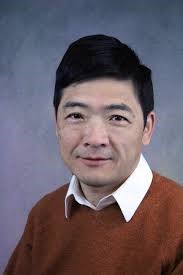Peide Ye
Oxide Materials and Devices
Elmore School of Electrical and Computer Engineering, Purdue University, USA
Email: yep@purdue.edu
Biography
Dr. Peide Ye is Richard J. and Mary Jo Schwartz Professor at School of Electrical and Computer Engineering. His research focuses on atomic layer deposition and its integration on various novel channel materials including III-V, Ge, 2D materials and complex oxides. He obtained his Ph.D. from Max-Planck Institute for Solid State Research in Germany and postdoc training at NTT Basic Research Laboratory, National High Magnetic Field Laboratory and Princeton University. He worked for Bell Labs of Lucent Technologies and Agere Systems before joining Purdue faculty in 2005. Prof. Ye received the 2011 IBM Faculty Award, Sigma Xi Award and Arden Bement Jr. Award. He is IEEE Fellow and APS Fellow for his contributions to materials and device development for compound semiconductor MOSFETs. Prof. Ye is also recognized as a Highly Cited Researcher among 6000 world wide in all fields.
|
|
Abstract for Presentation
Atomic-layer-deposited atomically thin In2O3 channel for BEOL logic and memory applications
In this talk, we report on the first demonstration of atomically thin In2O3 channel for logic and memory devices by a back-end-of-line (BEOL) compatible atomic layer deposition (ALD) process [1,2]. High performance planar In2O3 transistors with high mobility of 113 cm2/V⋅s and record high maximum drain current of 10 mA/um in a planar device and 20 mA/um in a single-channel gate-all-around (GAA) nanoribbon device are achieved by channel thickness engineering and post-deposition annealing [3]. This is the first time to realize a single channel field-effect transistor with two digits drain current in any kind of semiconductors. ALD In2O3 3D Fin transistors are also demonstrated, benefiting from the conformal deposition capability of ALD [4]. High-performance In2O3 ferro-electric transistors are demonstrated using ALD HfZrO2 gating with >2.2V large memory window, >10 years retention and >109 endurance [4,5]. These results suggest ALD oxide semiconductors and devices have unique advantages and are promising toward BEOL-compatible monolithic 3D integration [7].
References
1. M. Si et al. IEEE EDL 42(2), 184-187, 2020.
2. M. Si et al. Nano Lett. 21 (1), 500-506, 2020.
3. Z. Zhang et al. DRC 2022 Late News.
4. M. Si et al. VLSI, T2.4, 2021.
5. Z. Lin et al. IEDM, TF17.4, 386, 2021.
6. Z. Lin et al. VLSI, 2022.
7. M. Si, Z. Lin et al. Nature Electronics 2022. doi.org/10.1038/s41928-022-00718-w
WELCOME TO CHINA TO ATTEND THE ICANS
23-26 August, Nanjing, China
Connect with us:



